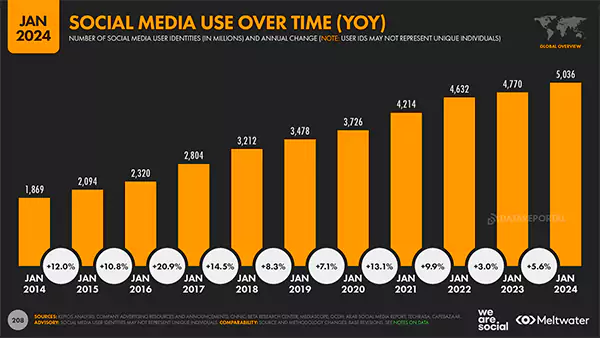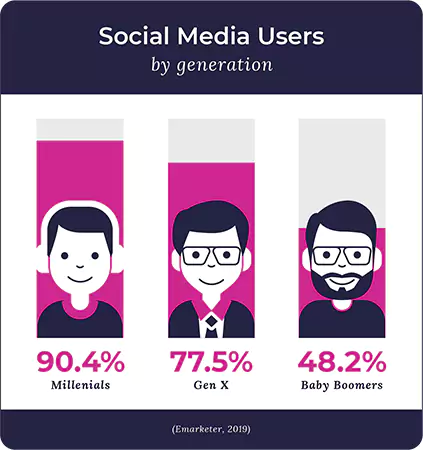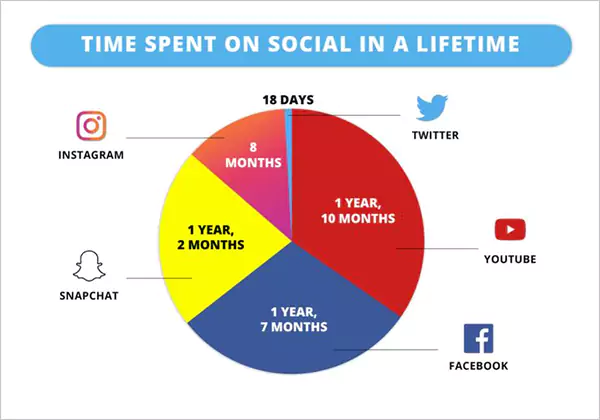6 Reasons Why Your Social Media Strategies Aren’t Working

The world today thrives on connectivity and communication, most of which happens through various social media platforms. For businesses, these platforms present a golden opportunity to reach out to potential customers, establish a brand voice, and drive sales.
But what if you’re putting hours of work into your social media strategies or finding right social media agencies for business? Unfortunately, you’re still not guaranteed success. Whereas social media offers vast potential, it’s equally complex and demands a well-thought-out approach.
It becomes frustrating when you do not know the exact reason why things are not going in the right direction. But do not worry, in this article, we will delve into six of the most common reasons your social media strategies might be falling short and how to rectify them.
So, without further ado, let’s get started:
Lack of Quality Visual Content
Social media thrives on visual content. Be it Instagram’s photo-driven platform or 𝕏’s quick snapshots to complement textual content, visuals rule the roost.
However, the quality of these visuals plays a pivotal role in engaging the audience. Check out Creative Fabrica to obtain incredible social media templates!
Using grainy, irrelevant, or repetitive pictures can harm your brand’s image more than having no images at all. Followers tend to skip past content that doesn’t resonate or appeal to them visually.
Now, using high-quality visuals is noteworthy, but it does not mean they have to be expensive. One effective solution lies in the use of affordable stock photos.
Stock photos offer a range of images suitable for various industries and topics. The affordability factor ensures you don’t exceed your marketing budget, yet you gain access to professional-grade photos that can uplift your content’s quality.
By integrating quality stock images, you can ensure that your posts are visually appealing and relevant to the content theme, thereby retaining and engaging your target audience.
Do You Know?

Inconsistent Posting Schedule
Remember the enthusiasm when you first started your social media page? The regular posts, the daily updates, and then, over time, the frequency dwindled. This inconsistency can be a significant detriment to your social media growth.
Just as one would tune in to their favorite TV show at a specific time each day or week, social media audiences, too, knowingly or unknowingly, expect regular content from their favored brands or pages.
An inconsistent posting schedule can lead to decreased visibility due to platform algorithms that favor consistent engagement. Moreover, if followers cannot predict when you’ll post next, they might lose interest or feel that the brand isn’t reliable.
It’s pertinent to establish a realistic and maintainable posting schedule. If it’s every day, thrice a week, or even weekly – ensure that there’s a pattern and consistency. Tools like social media planners or schedulers can assist in automating this process, ensuring you never miss out on keeping your audience engaged.
The following data demonstrates an increasing number of social media users over time.

Not Engaging with Your Audience
Social media isn’t just a broadcast platform; it’s a two-way street. Whereas brands can share updates and information about their products or services, the real magic happens in the comments section, the shares, the likes, and the direct messages. Ignoring these interactions is similar to ignoring a customer walking into a physical store.
Engaging with your audience builds trust, establishes brand loyalty, and fosters community. Interaction with followers, by replying to a comment or maybe thanking them for sharing your content, can go a long way in building a positive brand image. Besides that, there are also various reels content ideas for Instagram and Facebook through which you can easily engage your audience and boost sales.
By regularly interacting with followers, acknowledging their feedback, or even proactively handling complaints, you show that the brand values its customers beyond mere transactions.
Here’s a Fun Fact

Failing to Understand Your Audience
At the heart of every successful social media campaign lies a deep understanding of one’s audience. Who are they? What are their preferences?
What do they respond best to? These are necessary questions every business needs to answer.
A generic, one-size-fits-all strategy might gather a few likes here and there but fails to create meaningful engagement or drive desired actions such as sales or sign-ups.
Taking time to research your audience can be transformative.
Conducting polls, surveys, or even directly asking your followers for feedback can provide invaluable insights. In addition, most social media platforms provide analytics tools that shed light on user demographics, online behaviors, and content preferences.
Using this data to tailor your content ensures that your posts resonate with your followers, fostering better engagement and driving desired outcomes.
Ignoring Analytics and Performance Metrics

In the digital world, every click, like, share, and comment equates to valuable data. Ignoring this treasure trove of information can be detrimental to your social media strategies. Analytics offer a clear picture of what’s working and what’s not.
Without a keen understanding of these metrics, businesses can continue making the same mistakes repeatedly, wondering why the desired results aren’t materializing.
There are numerous metrics to pay attention to, depending on your objectives. If brand awareness is your goal, then metrics like reach, impressions, and engagement rate become vital. If it’s sales, then conversion rates and click-through rates become a necessity.
By regularly reviewing and understanding these metrics, businesses can refine their strategies, make necessary tweaks, and optimize for better results. There are various tools available today, both built-in within platforms and third-party, that provide detailed insights into performance metrics.
Adopting these tools, and the insights they offer, can be a game-changer for your social media endeavors.
Let’s take a look at the pie chart showing time spent on social media in a lifetime.

Not Adapting to Platform-Specific Norms
Whereas it might seem efficient to craft a single message and blast it across all social media platforms, it might not be a good strategy to get the best results. Each social media platform has its unique culture, norms, and audience behaviors.
What works wonderfully on Instagram might fall flat on LinkedIn. Recognizing and respecting these differences is paramount for effective social media strategies.
For instance, a well-timed, catchy tweet might gain traction on Twitter, and a more visual post would be better suited for Instagram. Similarly, while LinkedIn is a professional platform ideal for B2B communication, platforms like TikTok or Snapchat cater to a younger audience looking for light-hearted, engaging content.
Businesses must recognize these differences, adapt their content accordingly, and ensure they’re speaking the right language on each platform.
Conclusion
Social media has firmly established its place as a pivotal tool for businesses aiming to extend their reach, foster community engagement, and drive sales. However, with its vast potential comes an equally vast array of challenges.
Understanding and rectifying the common pitfalls, from ensuring high-quality visuals with resources like affordable stock photos to diving deep into analytics, can drastically enhance the efficacy of your social media strategies.
In the dynamic landscape of social media, where trends change rapidly, and user behaviors evolve continually, staying adaptable, informed, and open to feedback becomes a necessity.
As businesses navigate this realm, focusing on authentic engagement, understanding one’s audience, and leveraging data for informed decisions can pave the way for a successful and impactful social media presence.







